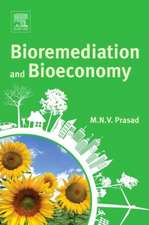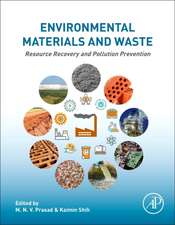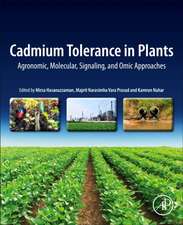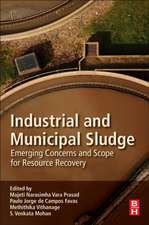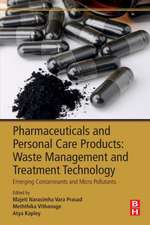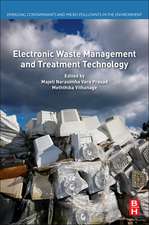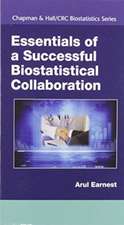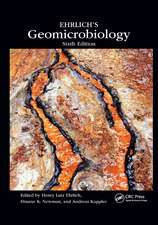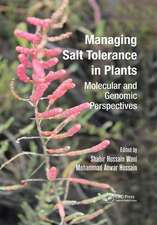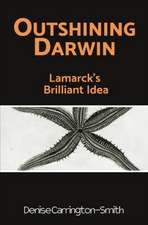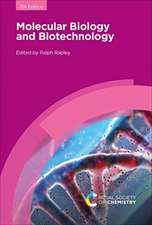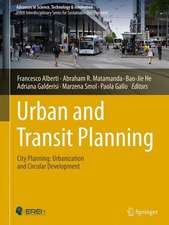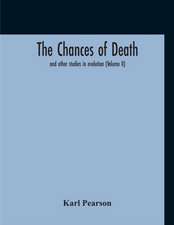Sustainable and Circular Management of Resources and Waste Towards a Green Deal
Editat de Marzena Smol, Majeti Narasimha Vara Prasaden Limba Engleză Paperback – 22 feb 2023
- Introduces innovative solutions in green energy transition
- Provides case studies as examples of a circular economy implementation in selected sectors of the economy, including water and wastewater, raw materials, and construction
- Suggests actions to counteract climate change and its consequences for people and the planet
Preț: 750.15 lei
Preț vechi: 975.21 lei
-23% Nou
Puncte Express: 1125
Preț estimativ în valută:
143.59€ • 156.02$ • 120.69£
143.59€ • 156.02$ • 120.69£
Carte tipărită la comandă
Livrare economică 14-28 aprilie
Livrare express 14-20 martie pentru 102.21 lei
Preluare comenzi: 021 569.72.76
Specificații
ISBN-13: 9780323952781
ISBN-10: 032395278X
Pagini: 468
Dimensiuni: 216 x 276 x 26 mm
Greutate: 1.07 kg
Editura: ELSEVIER SCIENCE
ISBN-10: 032395278X
Pagini: 468
Dimensiuni: 216 x 276 x 26 mm
Greutate: 1.07 kg
Editura: ELSEVIER SCIENCE
Cuprins
Section 1. Strategies for implementation of Green Deal
1. Achieving sustainable development goals via green deal strategies
2. Farm to fork: sustainable agrifood systems, integrated pest management
3. Global directions for the green deal strategies—Americas, Europe, Australia, Asia, and Africa
Section 2. Circular economy
4. Circular Economy in Green Deal Strategies
5. Circular Economy - the new innovation wave
6. Circular Economy from a Water and wastewater management perspective
7. Mine waste: contributions to the circular economy
8. Waste to energy and circular economy: the case of anaerobic
9. Food waste management in Thailand for sustainable development
10. Sustainable use of construction and demolition wastes in a circular economy perspective
Section 3. Sludge management – resource recovery
11. Biofiltration as an ecological method of removing sewage sludge doors by solar drying
12. Sustainable/ Integrated / Sewage Sludge Management
13. Bioleaching of heavy metals from a contaminated soil using bacteria from waste water sludge
14. Sewage sludge valorization in the context of resource recovery
Section 4. Phosphorus management
15. Importance of Phosphorus raw materials in Green Deal strategies
16. Regional strategies for the management of Phosphorus
17. Integrated Nutrient Management as a driving force for the sustainable use of phosphorus
18. Phosphorus raw materials in Sustainable Agriculture
19. Phosphorus-driven eutrophication mitigation strategies
20. Phosphorus recovery - recent developments and case studies
Section 5. Climate Action
21. Action toward carbon neutrality - essential elements of the Green Deal
22. Water and climate change in the regional, national and international perspective
23. Water resources and climate change: regional, national and international perspective
24. Environmental footprint as a tool to measure climate neutrality activities
25. How to achieve climate neutrality—the impact of fertilizer usage on climate change
Section 6. Clean Energy Transition
26. Energy efficiency to improve Sustainability
27. Green Strategies for Waste to Energy
Section 7. Sustainable management and global agenda
29. Digital technologies and clean energy
29. From waste to value: enhancing circular value creation in municipal solid waste management ecosystem through artificial intelligence-powered robots
1. Achieving sustainable development goals via green deal strategies
2. Farm to fork: sustainable agrifood systems, integrated pest management
3. Global directions for the green deal strategies—Americas, Europe, Australia, Asia, and Africa
Section 2. Circular economy
4. Circular Economy in Green Deal Strategies
5. Circular Economy - the new innovation wave
6. Circular Economy from a Water and wastewater management perspective
7. Mine waste: contributions to the circular economy
8. Waste to energy and circular economy: the case of anaerobic
9. Food waste management in Thailand for sustainable development
10. Sustainable use of construction and demolition wastes in a circular economy perspective
Section 3. Sludge management – resource recovery
11. Biofiltration as an ecological method of removing sewage sludge doors by solar drying
12. Sustainable/ Integrated / Sewage Sludge Management
13. Bioleaching of heavy metals from a contaminated soil using bacteria from waste water sludge
14. Sewage sludge valorization in the context of resource recovery
Section 4. Phosphorus management
15. Importance of Phosphorus raw materials in Green Deal strategies
16. Regional strategies for the management of Phosphorus
17. Integrated Nutrient Management as a driving force for the sustainable use of phosphorus
18. Phosphorus raw materials in Sustainable Agriculture
19. Phosphorus-driven eutrophication mitigation strategies
20. Phosphorus recovery - recent developments and case studies
Section 5. Climate Action
21. Action toward carbon neutrality - essential elements of the Green Deal
22. Water and climate change in the regional, national and international perspective
23. Water resources and climate change: regional, national and international perspective
24. Environmental footprint as a tool to measure climate neutrality activities
25. How to achieve climate neutrality—the impact of fertilizer usage on climate change
Section 6. Clean Energy Transition
26. Energy efficiency to improve Sustainability
27. Green Strategies for Waste to Energy
Section 7. Sustainable management and global agenda
29. Digital technologies and clean energy
29. From waste to value: enhancing circular value creation in municipal solid waste management ecosystem through artificial intelligence-powered robots


